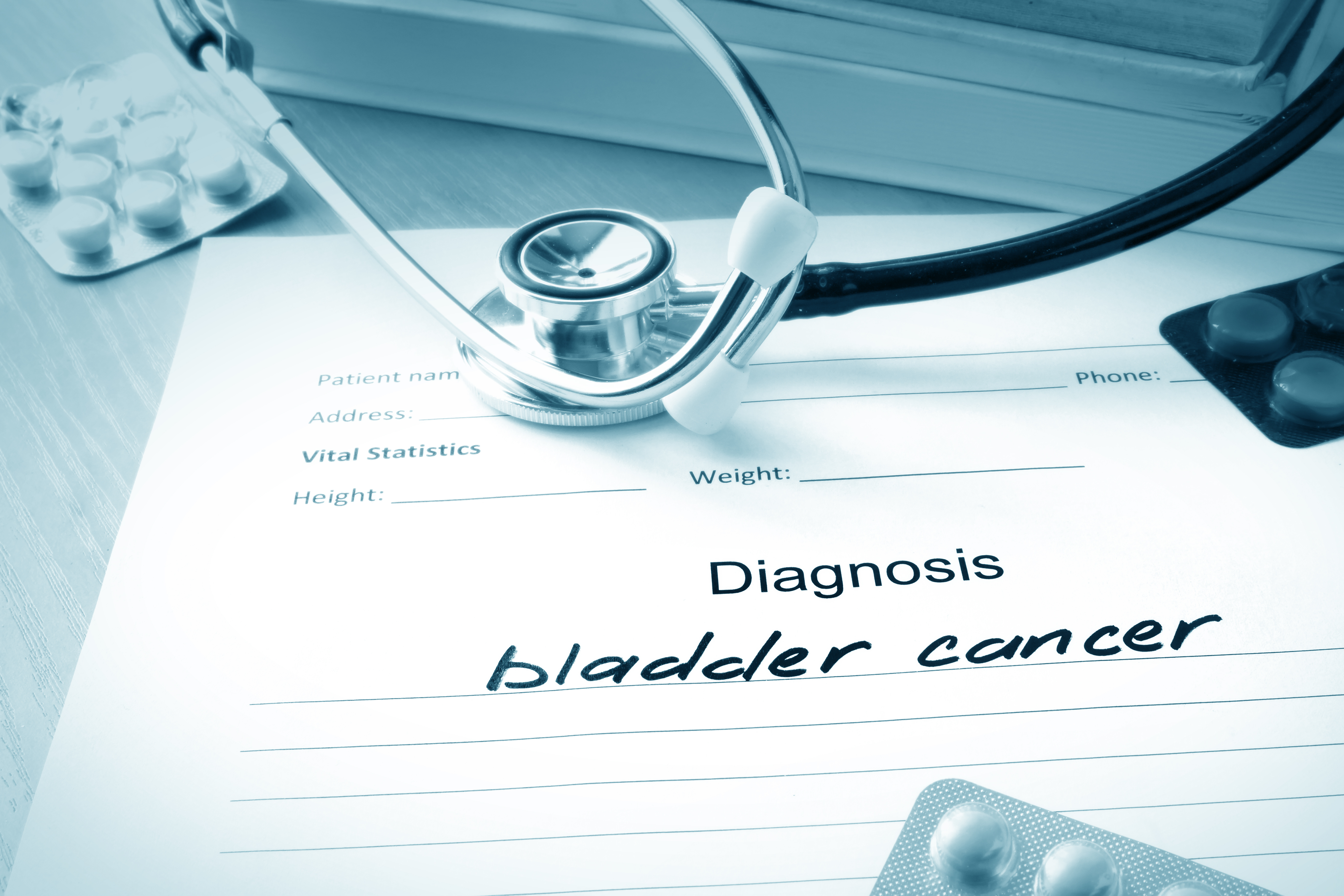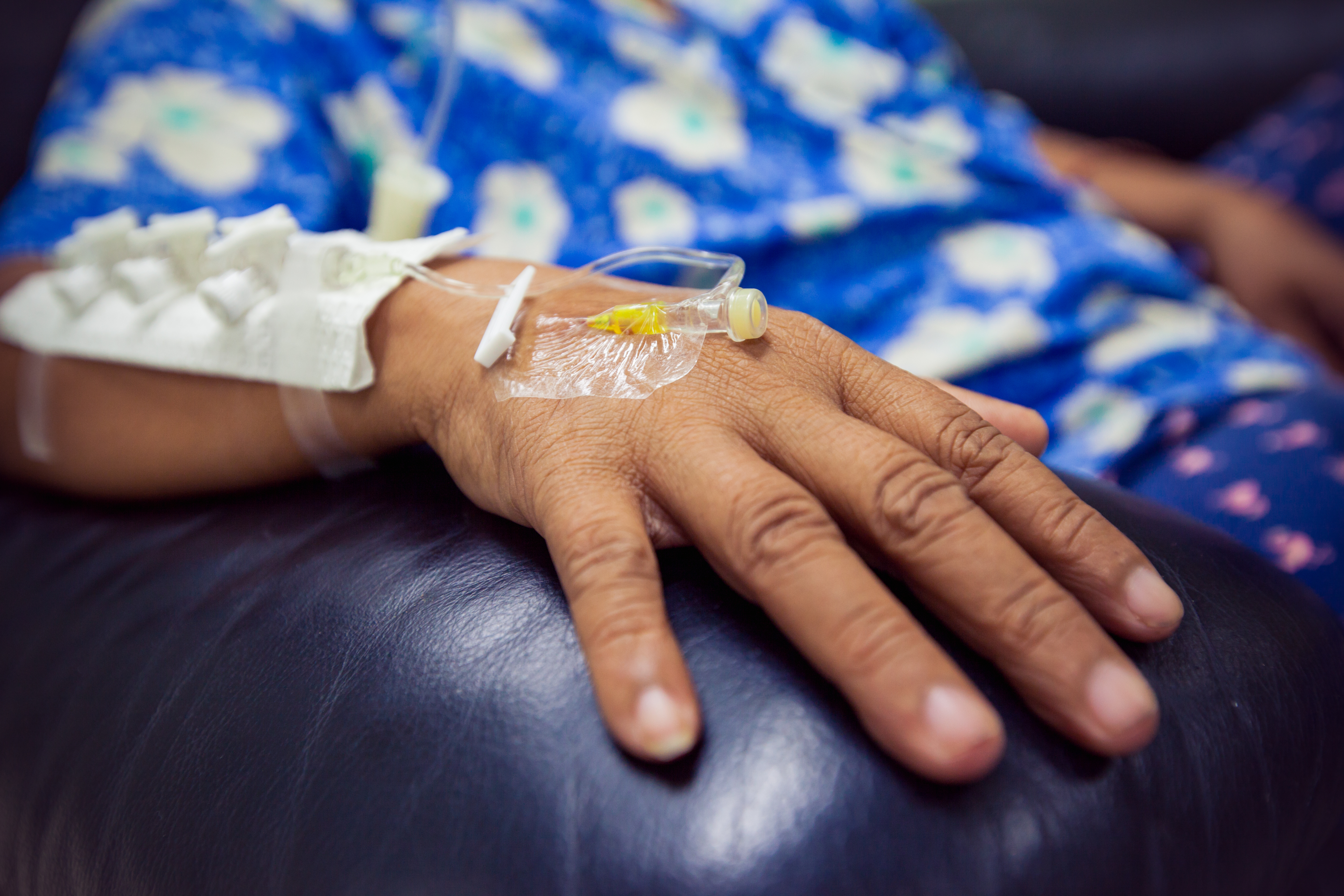The urinary bladder is a hollow muscular organ located in the lower part of abdomen below the belly button. It collects urine from kidneys and holds it temporarily before passing it out. When cells in the bladder divide and grow uncontrollably, it results in bladder cancer.
The bladder wall has several layers, and in 95% cases, the bladder cancer begins in the urothelial cells (tall, thin cells) that form the inner lining of the bladder. This type of cancer is known as the transitional cell carcinoma of the bladder.
When cancer grows into or through other layers of the bladder wall the condition gets worse, which over time may reach the distant parts of the body.
Prevalence of bladder cancer
Bladder cancer is the sixth most common cancer in males and 17th most common in females. According to the Globocan 2018 database, about 18, 926 new bladder cancer cases and 10, 231 deaths were reported in India.
Signs and symptoms of bladder cancer
The most common signs and symptoms of bladder cancer are:
- Hematuria (blood in urine)
- Dysuria (pain or discomfort while urinating)
- Increased urinary frequency
- Pelvic pain
Risk Factors of bladder cancer
The exact cause of bladder cancer is unknown, but the following factors may increase the risk of bladder cancer:
Modifiable risk factors
1. Smoking-
Smokers are three times more likely to get bladder cancer than non-smokers.
2. Occupational exposure to carcinogens-
Metal factory workers, painters, rubber industry workers, leather workers, textile and electrical workers, miners, cement workers, transport operators, excavating-machine operators, and in jobs that involve manufacture of carpets, paints, plastics, and industrial chemicals get exposed to various chemicals, which may harm the bladder lining and increase the risk of bladder cancer.
Bladder cancer also has been associated with exposure to paint components, polycyclic aromatic hydrocarbons (PAHs), and diesel exhausts.
Several research studies have investigated the relationship between occupational exposure to hair dye use and the risk of bladder cancer. This increase in risk does not appear to extend to personal users of such hair dyes.
3. Medications
The exact mechanism of how certain medications lead to bladder cancer is unknown. But, studies indicate that the usage of anti-diabetic medications (pioglitazone) and cancer therapies (cyclophosphamide and radiation therapy) may increase the risk of bladder cancer.
4. Arsenic in drinking water
According to some research studies, the presence of 10 μg/L arsenic in drinking water doubles the risk of bladder cancer.
Non-modifiable risk factors
1. Gender
Men are at higher risk of bladder cancer compared to women.
2. Age
Though bladder cancer can happen at any age, it usually affects older people. With advancing age, the risk of developing bladder cancer increases and may result in the worsening of the patient’s clinical presentation and outcomes.
3. Family history
Although rare, individuals who have a family history of bladder cancer may share the same genes, which may increase their risk of developing bladder cancer.
4. Chronic bladder infection or irritation
Chronic or frequent bladder infection or any other reason that causes bladder irritation for long duration may increase the chance of bladder cancer. However, the exact mechanism is not clear.
5. Personal history of cancer
People who have a history of cancer in any part of the urinary tract are at higher risk of developing bladder cancer. Additionally, undergoing treatment with radiation therapy or chemotherapy for these cancers may irritate the bladder and contribute to bladder cancer.
Symptoms of bladder cancer
Blood in urine is the commonest symptom of bladder cancer. It can vary based on location of tumour within the bladder and can also produce symptoms like pain in lower abdomen, difficulty in passing urine etc.
Diagnosis of bladder cancer
Initially, the signs and symptoms, patient’s medical history, and family history are reviewed. A urinalysis may help to check if there are any traces of blood. Additionally, urine cytology is done to check for any abnormal cells that may shed from the bladder lining.

The following are some tests and procedure done to detect the stage and any abnormalities in the surrounding organs:
- Cystoscopy: In this procedure, a small cytoscope (a thin flexible tube with a video camera at an end) is inserted through the urethra. The camera would then transmit the real-time images of the bladder lining on the monitor.
- Biopsy: It is done when the person is undergoing cystoscopy. The procedure involves inserting special tools through the cystoscope to collect the sample of tumour tissue.
- Imaging tests: Tests such as computerized tomography (CT) scan, pyelogram, ultrasound, and an MRI are done to examine the structures of your urinary tract.
Stages of bladder cancer
The cancer staging is done by the TNM staging system. It provides detailed information about:
- Tumour (T): Whether the primary tumour has grown through the bladder wall
- Node (N): Whether the cancer has spread to the lymph nodes surrounding the bladder
- Metastasis (M): Whether the cancer has spread to distant parts of the body
Bladder cancer has the following stages:
- Stage 0a/0is: Cancer cells are located on the surface of the inner lining of the bladder.
- Stage I: Cancer has spread to the connective tissue beneath the inner lining of the bladder, but not reached the muscle layer.
- Stage II: Cancer has spread to the muscular wall of the bladder, but hasn’t reached the fatty tissue surrounding the bladder, lymph nodes, and other organs.
- Stage III: Cancer has grown through the muscle layer of the bladder and has spread into the prostate, seminal vesicles, uterus, or vagina and/or cancer has spread to nearby lymph nodes
- Stage IV: Cancer has spread from the bladder to the pelvic wall or abdominal wall or might have spread to distant parts of the body like bone, lung, or liver.
Treatment for bladder cancer
Once bladder cancer is diagnosed, your treatment team will discuss the treatment options, its benefits, possible risks and side-effects. The treatment for bladder cancer is based on the stage of cancer during the time of diagnosis. Treatment modalities for bladder cancer include:
- Bladder cancer surgery
- Chemotherapy
- Radiation therapy
- Immunotherapy
Bladder Cancer Surgery
Depending upon the stage of cancer and performance status, the surgeon may recommend any of the following types of surgery:
- Transurethral resection of bladder tumour (TURBT)
This procedure involves removal of bladder cancer confined to the inner layers of the bladder. A type of thin, rigid cystoscope called a resectoscope is put into your bladder through your urethra. The resectoscope has a wire loop at the end that is used to remove any abnormal tissues or tumors. Early-stage cancers can be removed using this approach.
2. Cystectomy
This procedure involves removal of all or a part of the bladder. It is of two types: Radical and partial.
- Partial cystectomy is performed when the tumour is limited to one area of the bladder and can be easily removed. This procedure involves the removal of only the portion of the bladder that contains the tumour.
- Radical cystectomy involves removal of the entire bladder, part of the reproductive organs (uterus or prostate) and surrounding lymph nodes. It is recommended when the tumour invades and spreads to larger parts of the bladder. Additionally, the prostate and seminal vesicles are removed in men, and in women the ovaries, fallopian tubes, the uterus, cervix, and a part of vagina are removed.
3. Urinary diversion
It is a surgical procedure, in which the surgeon creates a new way to reroute the normal urine flow after the removal of the bladder.
Chemotherapy
It is a treatment option that uses specific drugs to kill or stop the growth of cancer cells. These drugs interfere with the process of cell division and promote cancer cell death.
Chemotherapy is recommended either before the surgery to shrink a tumour (neoadjuvant therapy) or after the surgery or radiation therapy, to kill remaining cancer cells (adjuvant therapy) or along with radiation therapy, to help the radiation work better or as a main treatment modality when cancer has spread to distant organs.

If chemotherapy is combined with radiation therapy then the following drugs are used:
- Cisplatin
- Cisplatin plus fluorouracil (5-FU)
- Mitomycin with 5-FU
If given alone, then the common drugs include:
- Gemcitabine and Cisplatin
- Dose-dense methotrexate, vinblastine, doxorubicin (Adriamycin), and cisplatin (DDMVAC)
Chemotherapy is given in several cycles, which involves a period of treatment followed by rest to allow the body to recover from its side effects.
Chemotherapy for bladder cancer can be given in 2 different ways:
a) Intravesical chemotherapy: For this treatment, the chemo drug is put right into the bladder. This type of chemo is used for the bladder cancer present only in the lining of the bladder.
b) Intravenous chemotherapy: For this treatment, the chemo is administered through a vein in the arm.
Though chemotherapy effectively destroys the cancer cells, they also attack the healthy cells, thereby causing some side effects. The side-effects depend on the drug used, its dose and duration. Some of the common side-effects of chemotherapy include the following:
- Nausea and vomiting
- Loss of appetite
- Hair loss
- Mouth sores
- Diarrhoea
- Constipation
- Fatigue
Most side effects go away shortly after chemotherapy, while some may persist for a longer period.
Radiation therapy
Radiation therapy involves delivering high-energy beams to destroy the cancer cells. In bladder cancer, radiation therapy is usually given:
- In patients who are medically unfit for surgery or who have a strong desire to preserve the native bladder
- As part of treatment for advanced bladder cancer.
- To manage symptoms caused by advanced bladder cancer.
Radiation therapy is mostly combined with chemotherapy for effective results. This is known as chemoradiation.
Radiation therapy may cause the following side effects:
- Skin changes in the site receiving radiation therapy
- Fatigue
. Bladder symptoms, like burning or pain when urinating, feeling the need to go often, or blood in urine
- Diarrhoea
- Nausea and vomiting
Immunotherapy
It involves the usage of certain medicines to boost a person’s immune system to find and destroy the cancer cells. The following are the common types of immunotherapy used in treating bladder cancer:
Intravesical BCG: In this type of immunotherapy, a live attenuated strain of BCG is inserted directly inside the bladder as a liquid. This drug activates cells of the immune system in the bladder and attacks bladder cancer cells.
Immune checkpoint inhibitors: Immune checkpoints are the part of the immune system that need to be activated to initiate an immune response. In some cases, the cancer cells use these checkpoints to avoid getting attacked. Checkpoint inhibitors are the drugs that release a natural brake on the immune system so that the immune system recognises and attacks the cancer cells. These drugs are used to treat bladder cancers that have spread to other parts of the body. Examples include Atezolizumab and Nivolumab.
Outlook
Cancer treatment is geared toward positive outcomes. However, these treatments have their own challenges. Hence, it is important to understand the possible side effects to cope-up with them. Following a healthy and well-balanced diet, engaging in regular exercise and staying positive during the treatment would help in better outcomes.
If you would like to know more about the treatment of bladder cancer, consult an oncologist through our website.

